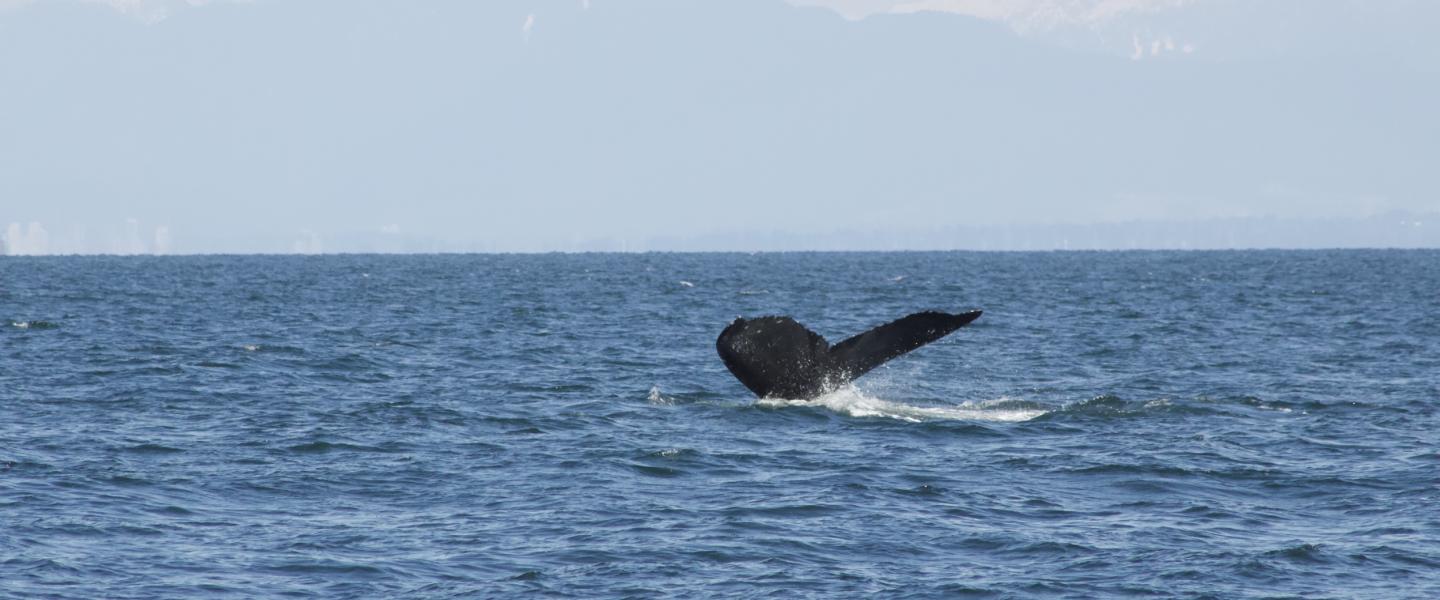
[Sunday, 4/22/18 – Sunday – M/V Sea Lion – Naturalist Erick]
This Sunday, we were again blessed with another high-pressure system bringing cool, blue skies, and a sunny day. There was only on teeny cloud that traveled its way across the islands. Captain Mike, myself, and great group of humans hopped onboard the M/V Sea Lion and headed out to do what we do every day…to find some amazing things! We headed north towards the outer islands and the Canadian border. Since it was a nice day, instead of doing some of our usual stops we wound our way north through the islands, past Flattop and Sandy Point on Waldron Island till we reached the confluence of Boundary Pass, Rosario Strait, and the Strait of Georgia. Here, where these three bodies of water meet at a sharp point created by the eastern edge of Saturna Island, the water is ever moving and roiling even on the calmest days. It is called Boiling Reef and the name is well-deserved. As the water curves around East Point it hits the shallower rocky bottom jutting out from the island and shoots the water straight towards the surface making it look like a huge pot of boiling water. This constant activity concentrates a lot of nutrients here that draws bird, fish, seals, sea lions, and sometimes even whales! We stopped at East Point to look at the colonies of Harbor Seals and Steller Sea Lions tanning on this sunny day first. While the Harbor Seals quietly looked back at us, the Steller Sea Lions like always crawled all over each other and caused a commotion. We especially enjoyed watching the Steller Sea Lions that were swirling and splashing in the waters right off the point there. They look like swimming Grizzly Bears every time. Next, we continued north into the Strait of Georgia next to Tumbo Island. Pretty soon we started to see a large blow in the distance. As we approached we saw that it was a Humpback Whale! Like yesterday, this was another adult Humpback and one of the first that we have seen return this year. Super Exciting! They are making their annual migration poleward and in past decade and a half they have returned to the inland waters which historically was part of their range, but after a century of heavy whaling they were hunted out and started to avoid the coastal areas. This whale was pretty active as it traveled north. It fluked up a bunch showing us the underside of its tail. This is how we identify individuals, but even though we saw it several times I couldn’t match it to any photos of previous whales we have seen, so it’s a new one to me! I can say that it was a BCX whale. Here the ID system works based on their dark coloration to light coloration ratio. The tails with mostly dark pigmentation are designated BCX, mixed coloration are BCY, and mostly light coloration are BCZ. After this whale slapped a couple times it was time to head back. We traveled back across Boundary Pass and through Presidents Channel making a few more stops to see a great Bald Eagle and a pretty friendly group of Harbor Porpoises. What another exciting day on the water!
Whale folks, that’s it until next time!
Naturalist Erick